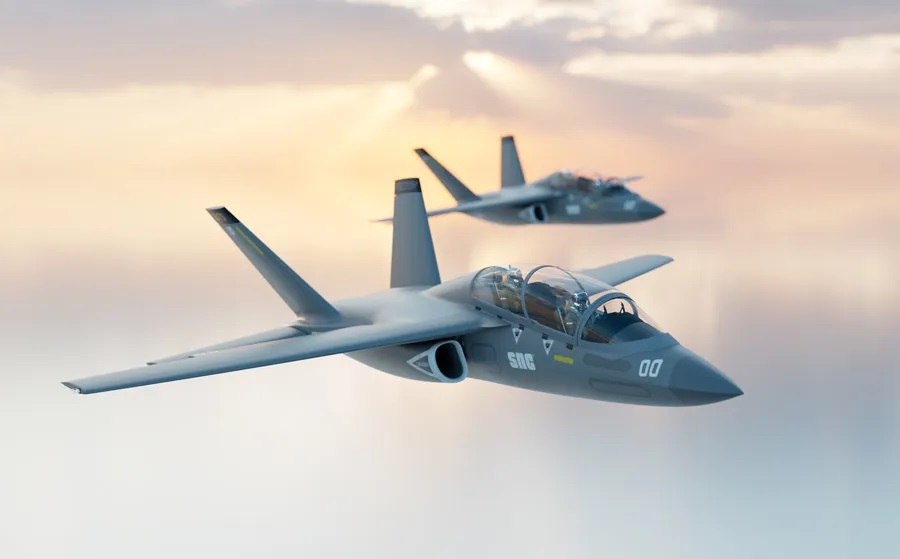The 500th F-35A Lightning II built for the U.S. Air Force has officially arrived at the Florida Air National Guard’s 125th Fighter Wing in Jacksonville, Florida. The aircraft landed on July 9, 2025, marking a historic milestone not only for the Air Force but also for the unit known as “the Thunder.”
A Major Step with the F-35A Lightning II
This fighter jet is part of the first three permanently assigned F-35A Lightning II aircraft for the 125th Fighter Wing. Each of these jets carries the unit’s traditional tail flash, a symbol of its long-standing aviation heritage. The arrival signals the ongoing shift from the older F-15C/D Eagles to the cutting-edge F-35A, a process that has been in motion for several years.
The transition reflects the broader Air Force plan to distribute advanced fifth-generation aircraft across its bases nationwide. Jacksonville’s wing is now the fourth Air National Guard unit to operate the F-35A Lightning II, joining similar wings in Vermont, Wisconsin, and Alabama. Altogether, nine units across the Air Force enterprise now fly this state-of-the-art fighter.
⚡ C100 quadcopter’s laser targeting helps F-35A hit every mark with GBU-12 smart bombs
F-35A Capabilities That Redefine the Mission
The F-35A Lightning II is not just another fighter jet; it is widely recognized as a leap forward in military aviation. Unlike the retiring fourth-generation F-15s, the F-35A brings stealth technology, advanced sensors, and electronic warfare features to the battlefield. These improvements allow the aircraft to fly undetected by many radar systems, track multiple targets at once, and provide vital intelligence to commanders in real time.
For the 125th Fighter Wing, these new abilities play a crucial role in protecting the southeastern coastline of the United States. The advanced systems give pilots the tools needed to operate effectively in contested environments, where older aircraft might struggle. The F-35A Lightning II is also designed to fit within the Air Force’s Agile Combat Employment model, which focuses on speed, flexibility, and survivability during operations.
White House Can’t Save Turkey’s F-35 Access—Congressional Ban Trumps Sanctions Relief
The Guard’s ability to field fifth-generation jets in strategically important regions adds strength to national defense. It provides commanders with rapid response options and greater resilience in the face of emerging threats. Jacksonville’s location along the East Coast enhances this role by extending the Air Force’s reach in both homeland defense and joint military operations.
Infrastructure and Training for the Transition
The arrival of the F-35A Lightning II in Jacksonville did not happen overnight. To prepare for the transition, the base underwent extensive upgrades and new construction. The base built a simulator complex to provide pilots with realistic training in virtual environments. It also modernized hangar ventilation systems to handle the special maintenance needs of the aircraft’s stealth coatings. Work also began on a climate-controlled weapons-load facility, designed to ensure safe and efficient handling of advanced munitions.
In addition, the Jacksonville Aviation Authority partnered with the base to widen taxiways at Jacksonville International Airport. This collaboration allows the new jets to move safely and efficiently alongside commercial and military aircraft.
UK shocks NATO summit with massive nuclear-capable F-35A fighter jet order
Airmen at the 125th Fighter Wing have also been preparing for years to operate and maintain the F-35A. The unit completed thousands of hours of specialized training to meet the high demands of fifth-generation aircraft operations. Both hardware and software of the F-35A Lightning II require a completely different skill set compared to the older Eagles, and the unit has embraced this challenge to keep aircraft mission-ready.
While the base continues to receive its assigned F-35A jets, it is also operating aircraft temporarily loaned from other Air National Guard units. This mix ensures that the wing remains mission-capable throughout the transition, maintaining readiness while steadily growing its permanent fleet of Lightning IIs.

